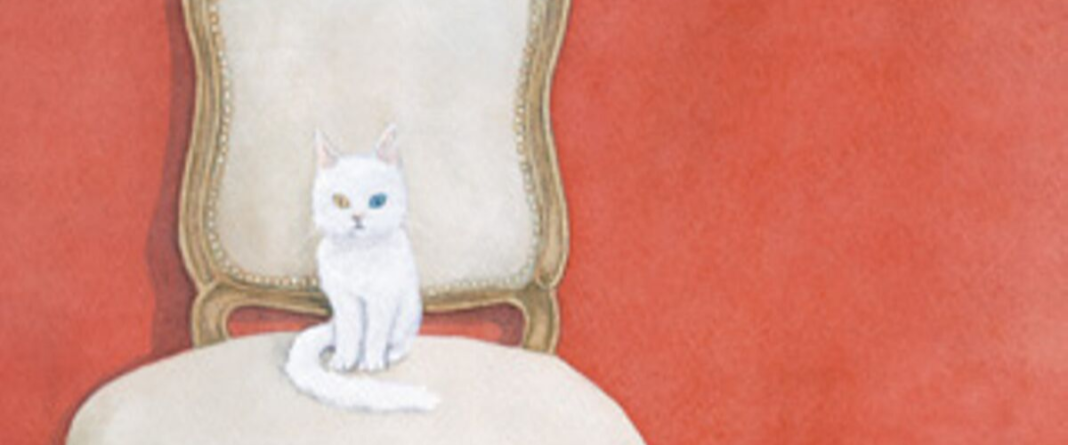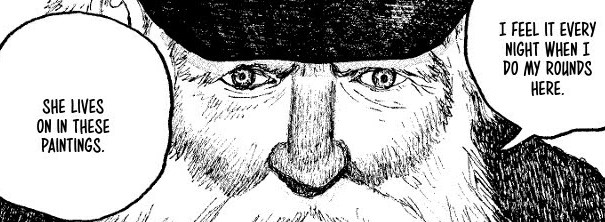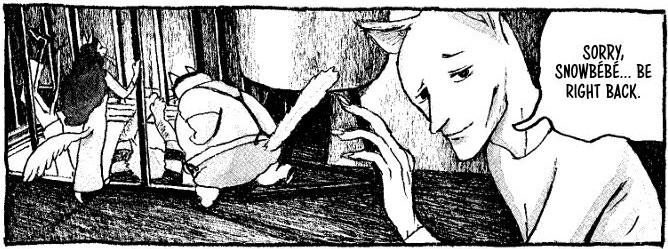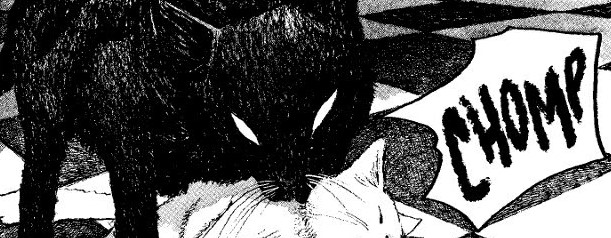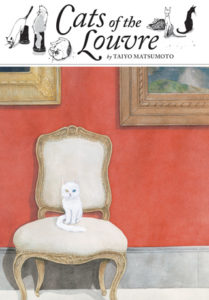
Story & Art: Taiyo Matsumoto
Translation & Adaptation: Michael Arias
Touch-up Art & Lettering: Deron Bennett
Publisher: VIZ Media
A manga about one of the most influential, well-regarded art museums in the world should be a thing of beauty, an object that draws the reader in with both its appearance and its ability to evoke an emotional response. Taiyo Matsumoto’s addition to the Louvre’s series of self-referential comics, Cats of the Louvre, is one such book, visually striking in a gorgeous hardcover emblazoned with a small, thoughtful feline perched upon an antique chair on the cover. The story itself is mystifying, and certainly not to every reader’s taste. But if you’ve got a penchant for gentle, melancholic magical realism stories involving humanoid cats and explorations of fine art, Cats of the Louvre might just be the manga for you.
The Louvre, the book posits, has a ragtag collection of stray cats living in its attic, under the care of the elderly nightwatchman, Marcel. These cats appear as normal to human eyes, but when shown amongst themselves are rendered in odd, humanoid guises. Snowbebe, a small white cat, is a dreamy feline portrayed as a little boy, despite the fact that he should be fully grown at six years old. The truth is that he is able to move through the paintings of the Louvre — an ability Marcel’s sister shared, until she disappeared after not having aged for several years. The nightwatchman cannot hear the paintings like his sister or Snowbebe, but he knows that his sister is lost somewhere, not dead as everyone around him had asserted for decades. With the help of the new watchman, Patrick, and a studious and art-loving Louvre tour guide, — and Snowbebe — he is able to make some headway into the search for the girl who was lost half a century ago.
Amidst this harrowing search for a long-lost sister, the cats are living out their own troubles. Snowbebe is losing his appetite, longing to linger in paintings, not feeling like he belongs in the real world. De facto cat leader Bluebeard is concerned for his well-being; the hairless Twiggy goes out of his way to help Snowbebe and is injured and captured in the process. And through it all the sinister-seeming black cat, Sawtooth, thinks Snowbebe is a risk to their livelihood and is plotting to kill him — though even that relationship is not what it seems to be.
Cats of the Louvre is, by turns, gentle, sad, gorgeous, and strange. Matsumoto’s choice to render the anthropomorphized cats differently from the actual humans keeps the two species distinct, highlighting the sense of surrealism in a manga that focuses on more classical forms of art. In this way, the manga effectively utilizes the medium to encompass the function and feeling of meandering through an art museum, taking in the centuries of art movements with mystified wonder, trying to drink in and process the images as they shift and blend.
This is an excellent choice for manga collectors who love cats — though readers should be warned that cat endangerment and death are not strangers to this strange narrative. An appreciation for and understanding of the world of fine art enhances the story’s impact but is not necessary to find the narrative evocative and meaningful.
Readers interested in exploring this unique perspective on the Louvre will find the manga available through VIZ Media, alongside Matsumoto’s Tekkonkinkreet and the just-announced Ping Pong, set for release in 2020.


